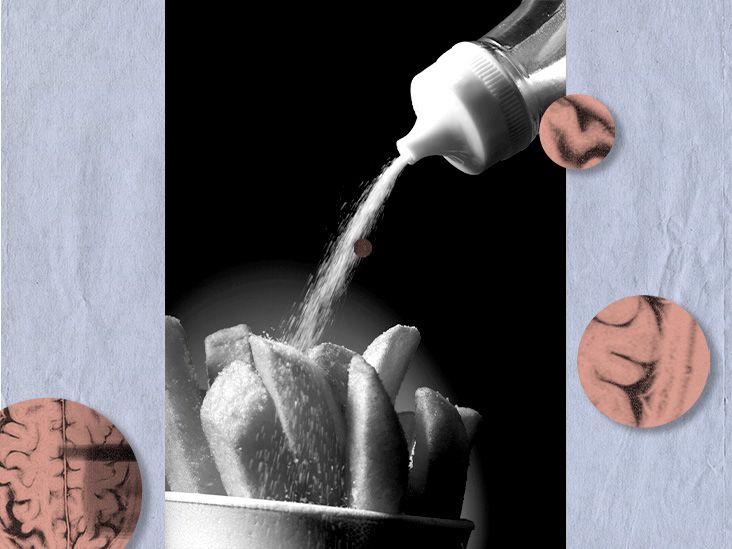Emotions can cause physical symptoms, such as muscle tension or pain. When these symptoms are persistent, it may feel as though emotions are trapped in the body.
While the idea of emotions being physically trapped in the body is not proven in research, some people report experiencing a release, or catharsis, when they express difficult or long-held feelings, or when they engage in mind-body therapies, such as yoga.
This ties into a growing amount of
Keep reading to learn more about emotions being trapped in the body, including where a person might feel them, signs they have trapped emotions, and ways of releasing them.

In a sense, yes. It is well-established that emotions affect the body as well as the mind. If a person has persistent or unresolved feelings that cause physical symptoms, they may feel as though these emotions are trapped or stuck.
For example, people can feel stress as muscle tension, nervousness as butterflies in the stomach, or heartbreak in their chest.
These emotions may be something a person is aware of, or they could be subconscious, meaning they are outside a person’s awareness. If they are subconscious or difficult to manage, they may continue affecting the body.
The exact mechanism behind this is still unclear, but scientists believe it is due to how the brain and nervous system process emotions.
A theory known as the “somatic marker hypothesis” argues that these sensations function as a signal, helping a person become aware of feelings that require their attention.
Where a person feels their emotions can vary. However, a
An
The resulting body maps suggest that people often feel:
- anger in the head or chest
- disgust in the mouth and stomach
- sadness in the throat and chest
- anxiety in the chest and gut
- shame in the face and chest
- happiness in a diffuse pattern all over the body
The fact that people highlighted the same areas of the body, even though the participants came from different parts of the world, suggests that people tend to feel emotions in similar places regardless of their culture.
Persistent or trapped emotions could also affect many other parts of the body, such as certain muscles.
Emotions can cause many sensations in the body. For difficult emotions, this could include:
- muscle tension or tightness
- a feeling of heaviness or tiredness
- a “lump” or choking sensation in the throat
- aching or pain
- nausea or “knots” in the stomach
There are also certain medical conditions that have links to stress or trauma, such as:
bruxismTrusted Source , or teeth grindingirritable bowel syndromeTrusted Source - fibromyalgia
Having physical symptoms or sensations does not always indicate a person has experienced trauma, but if the symptoms are persistent and occur alongside other potential signs of post-traumatic stress disorder (PTSD), they might.
Another way in which emotions can cause physical symptoms is through somatization. This is when emotions “convert” into physical symptoms. These symptoms are real, but the cause is psychological. A person or their doctor may mistake these symptoms for signs of disease.
Sometimes, releasing or expressing emotions comes easily. For example, if a child falls down, they may cry due to the pain or shock, but then recover.
In other situations, expressing feelings is more difficult. This can be for a variety of reasons. A person may feel shame or guilt about their emotions or what caused them. Alternatively, they might be afraid of their feelings, or simply be unaware of them.
A qualified therapist can help someone work through these difficulties. Some therapists work specifically with body-based approaches, which means they focus on the body as well as the mind.
Research on these types of psychotherapy is still in the early stages, but a 2020 review on one type, known as somatic experiencing, found some evidence that it could have positive effects on people who have experienced trauma and those who have not.
Additional techniques a person could try include:
- Trauma-informed yoga (TIY): This form of yoga aims to help people reconnect to their bodies after trauma, which some people report results in an emotional release. A 2022 rapid review found evidence that yoga helps trauma survivors feel more centered and self-compassionate, and that it may teach coping skills. However, more high quality research is necessary.
- Meditation: Meditation can help bring awareness to how a person feels, physically or emotionally. A 2022 study of 108 veterans found that a 10-week program of mind-body skills, including meditation, reduced symptoms more effectively than standard treatment.
- Exercise: For some people, exercise is a source of catharsis. Some use exercise to “burn off” nervous energy or to express anger in a safe way. There is also some evidence that dance therapy may help survivors of trauma, but again, research is limited.
Anyone who is concerned about their mental health can speak with a doctor or therapist for advice. A person does not need to have a diagnosis or wait until symptoms become severe before they seek help.
Similarly, people should consult a doctor about any unexplained physical symptoms. Even if they are fairly certain the cause is psychological, it is important to rule out other explanations. Only a doctor can do this.
When looking for a therapist, always check they have the right accreditation. The field of body-based therapy is still relatively new, and not all practitioners who claim to be able to help are trained in treating mental health conditions or past trauma.
Help is out there
If you or someone you know is in crisis and considering suicide or self-harm, please seek support:
- Call or text the 988 Lifeline at 988 or chat at 988lifeline.org. Caring counselors are available to listen and provide free and confidential support 24/7.
- Text HOME to the Crisis Text Line at 741741 to connect with a volunteer crisis counselor for free and confidential support 24/7.
- Not in the United States? Find a helpline in your country with Befrienders Worldwide.
- Call 911 or your local emergency services number if you feel safe to do so.
If you’re calling on behalf of someone else, stay with them until help arrives. You may remove weapons or substances that can cause harm if you can do so safely.
If you’re not in the same household, stay on the phone with them until help arrives.
Emotions have a significant impact on the body. If an emotion is persistent, it may cause recurring physical discomfort, such as teeth clenching when stressed. This may feel as though emotions are trapped in the body.
Medical research has not proven that this is literally what is happening when emotions affect the body, but early research suggests that body-based therapies such as TIY or somatic experiencing may help to improve mental health, particularly for those with PTSD.
Some people report experiencing a release during these therapies, which may feel like a wave of intense emotion that passes, leaving a person feeling better. More research is necessary to understand this connection.
Anyone who is concerned about their health should check with a doctor to rule out physical causes before working with a therapist.


